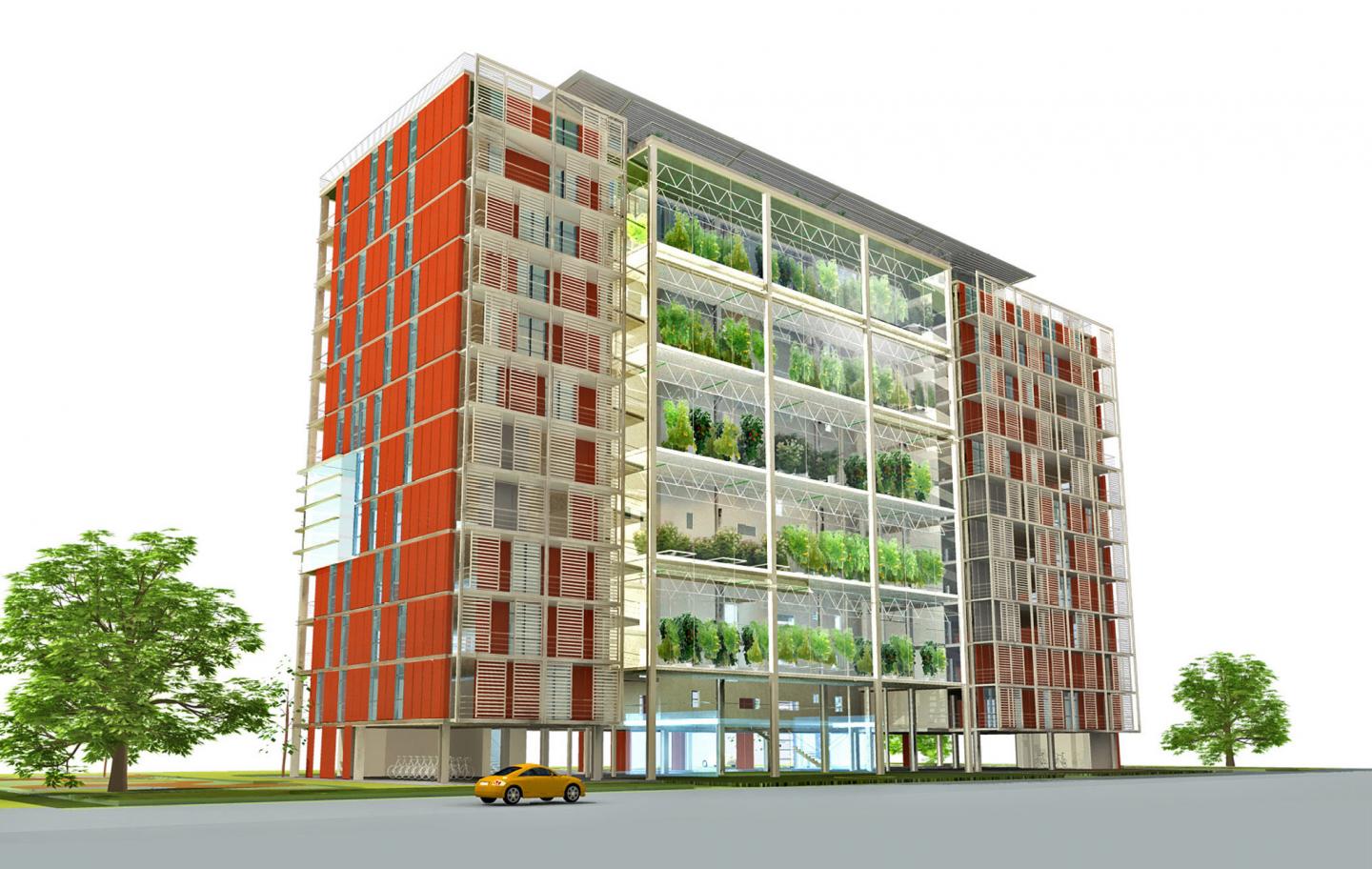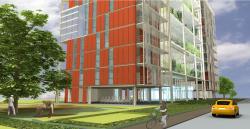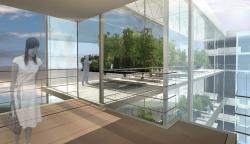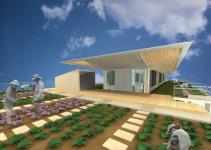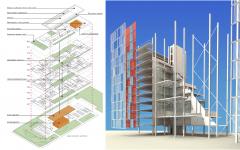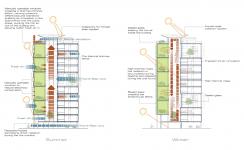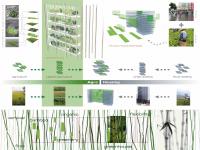Agro-Housing, the winning project for Living Steel – competition for sustainable housing {2007}, suggests an innovative combination of a vertical multi-storey greenhouse and an apartment building.
Agro-Housing enables the tenants of the building to grow their own vegetable produce close to home. It is the first building of its kind, combining rural agriculture with high-rise apartment living.
The multi-storey greenhouse layout offers a wide range of organic crops on soil less culture, equipped with highly-developed drip irrigation. The greenhouse irrigation system is based on recycled grey water collected from the apartments, as well as rainwater from the rooftop.
A calculated ten square meters of greenhouse space per apartment is sufficient to support one average family’s vegetable consumption ratio in China. Use of the greenhouse does not require previous knowledge or training – anyone can independently manage their vegetable cultivation.
Agro-Housing offers a multitude of functions, ultimately changing the accepted notions of urban and rural life, cutting the costs of deploying urban infrastructure, roadways and systems and offering an opportunity for a renewed viewpoint of the commonplace urban environment.
Agro-Housing is an example of an optimized way to use natural resources and conserve energy, protecting the environment and greatly reducing pollution.
The building includes solar-based heating and cooling and a geothermal system utilizing the existing underground high water table
The tenants will spend more time close to home: growing their own sustenance, educating children and enjoying the opportunity to cultivate social ties within the community.
Agro-Housing suggests a revolutionary social and urban order, with a number of key advantages:
1. A source of fresh organic produce, with no chemicals, mass-produced fertilizers or diseases.
2. Additional agricultural space for reforestation {trees reduce the effect of greenhouse gases and the damage to the Ozone layer}.
3. A method of preventing land pollution with pesticides and poisons typical in conventional agriculture
4. Use of geothermal energy {modern buildings are the main energy consumers worldwide}.
5. Smart use of recycled water for irrigation.
6. Reduced urban infrastructure development and deployment.
7. Lowered density of commercial zones for agricultural produce, including the infrastructure, roadways and traffic needed to support them.
8. Additional income and jobs {growing and selling home-grown vegetable produce}.
9. Stronger family and social ties and improved relations between tenants {communal care of the greenhouse}.
10. Raising public awareness for a sustainable form of living, contribution to local communities and promoting care for the environment.
Agro-Housing is planned for construction in Wuhan, China, and expected to become the prototype module for a future neighborhood totaling some 10,000 residential units. It has currently met with considerable interest and enthusiasm in various locations worldwide.
Agro-Housing offers a ready-available alternative to the abuse of natural resources in a time when significant changes are affecting the earth`s capacity to enable human growth and development.
2007
2007
Favorited 1 times
